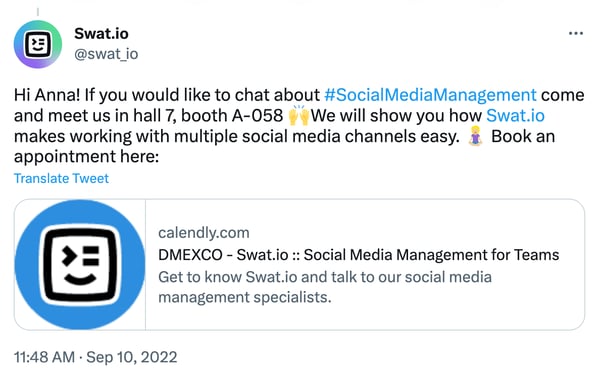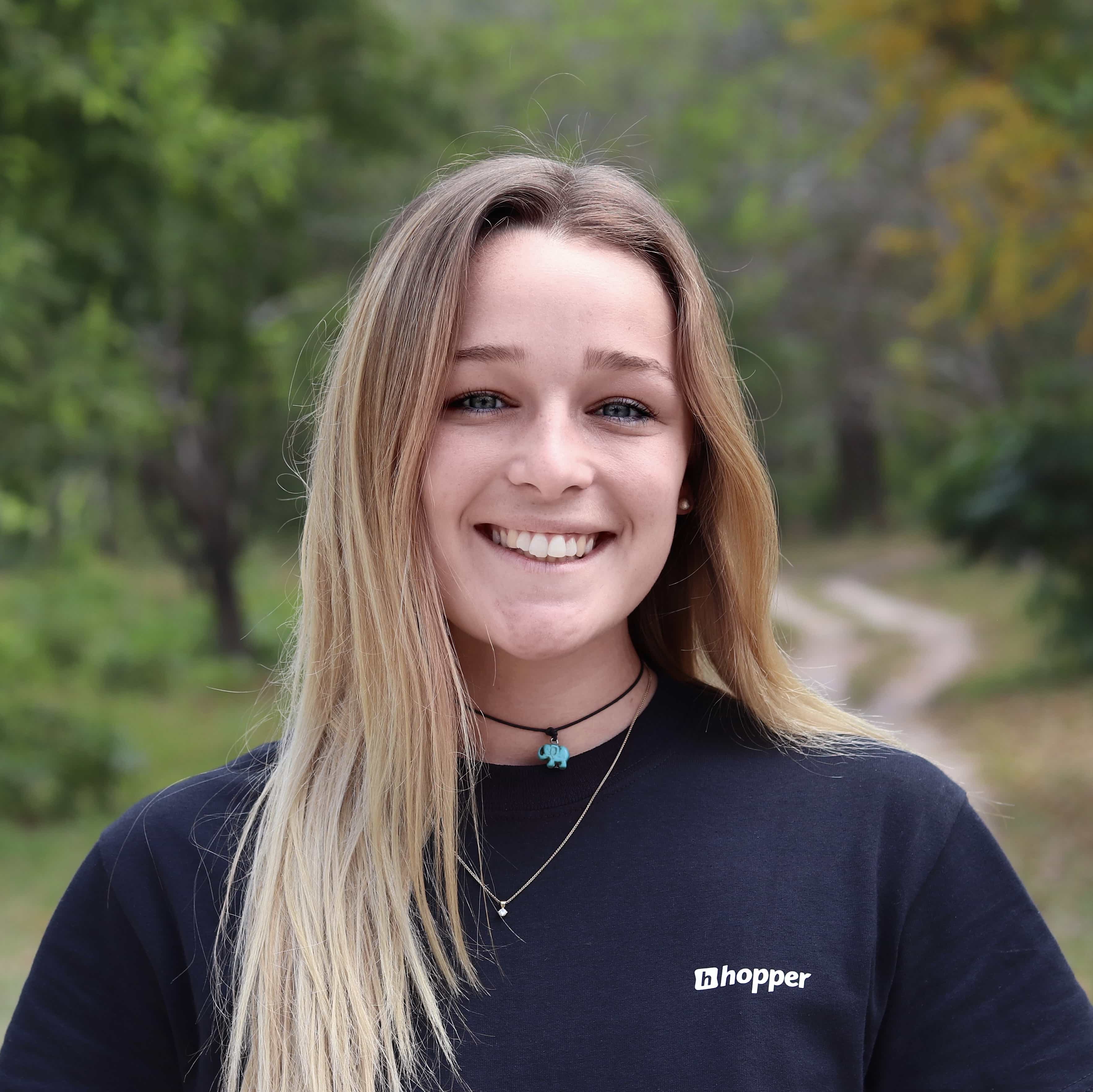May 26, 2023
 by Carina Kröpfl / May 26, 2023
by Carina Kröpfl / May 26, 2023

No business should be without social media monitoring.
It helps you improve customer service, prevent social media storms, and generate valuable leads. Armed with useful information, you’ll stay ahead of the competition and find good content or the right influencers.
However, you don’t just need the right tool for efficient monitoring. You need a good strategy – or several.
We’ve put together strategies that you can use to achieve a range of objectives, and we examine how social media monitoring works, which aspects are most important, and how to best define keywords.
Social media monitoring means observing social media and looking out for relevant information. But observation is just half the story. Only when you analyze the information you’ve collected and use it to create measures do you unlock the full power of monitoring.
People often distinguish between social media monitoring and social listening. Social media monitoring is when you search for mentions directly linked to your business, products, or competitors. Social listening takes things a step further. You observe conversations and trends affecting your industry as a whole and study the results to improve your marketing strategies.
As the lines between monitoring and listening are blurred in practice, we use both terms synonymously here.
With social media monitoring and social media listening, you can achieve various objectives: avoid PR crises, improve your customer service and products, make valuable contacts, and win new customers.
Of course, you can begin right away by tracking keywords about your brand and industry. However, the value is limited.
Monitoring with a clear strategy is much more effective. This means deciding in advance which objective you want to achieve on which platform and then defining appropriate keywords and key performance indicators (KPIs) based on that info.
If you’d like to achieve multiple objectives, come up with various monitoring strategies. Remember to adapt them regularly.
Use these social media monitoring strategies to listen to your customers and boost your online visibility.
Essentially, you can approach social media monitoring manually or with a listening tool. With the manual approach, employees search for relevant conversations on social media, then gather and evaluate the results. On the other hand, you could use social media monitoring software to handle the search, collection, and sometimes the evaluation of predefined keywords.
Manual monitoring is beneficial as people are (still) better at collecting the content of conversations than software. They also detect stylistic elements such as irony or sarcasm in a way that software can’t (yet). This means the results are usually of high quality.
However, all that searching, scrolling, and reading takes time. Manual monitoring is, therefore, only useful for limited quantities of data and if you have a lot of resources available.
Most businesses use monitoring tools or social media tools that have monitoring functions, but software can’t do it all, either. Humans should do the majority of the work involved in evaluating results and adapting marketing strategies accordingly.
But the effort is much smaller than with manual monitoring. Good monitoring tools allow you to follow conversations across multiple channels and evaluate large quantities of data.
Before you start monitoring, answer the following questions for yourself:
Where should monitoring take place? Facebook? Twitter? Instagram? Which channels matter to your target audience? Where do your members communicate with each other, and where are you likely to find the information and insights you want?
Note that different conversations take place on different platforms. Users aren’t talking about the same things on Twitter as they are on LinkedIn. Sometimes social networks aren’t enough. Expand your monitoring to blogs or forums if necessary.
What are your team’s objectives? Do you mainly want to observe how others perceive your brand, measure responses to specific events, or keep track of competitors? Is the search for influencers a priority? Have you just introduced a new product and want to find out how it’s going down with your audience? In most cases, it makes sense to link several objectives.
Queries are at the heart of monitoring.
A query consists of keywords and operators. Keywords are important terms such as product or brand names, adjectives, or industry watchwords. The exact selection depends on your monitoring strategy. Don’t forget to include frequently used misspellings.
Operators are words like “and,” “or,” and “not” to limit your search. Use operators to specify that a tool should only gather conversations on “operating system” when this appears with “Windows,” not “iOS,” or that both are desirable, but not “Android.”
The use of operators also helps prevent a monitoring tool from gathering conversations on both manicures and DIY tools when you track the word “nail,” for instance.

Source: Swat.io
How well you define a query determines the success of monitoring. The more precisely you select keywords and the better you limit your search with operators, the more relevant your results will be. Ideally, you should test a query first to reduce the proportion of irrelevant results and refine your monitoring strategy.
Tip: Include synonyms and common misspellings of keywords in your query. Find out which terms people actually use in relevant conversations to discover multiple meanings.
Many people give opinions on brands or products on social networks without tagging the brand or business. Social media monitoring gives you an insight into some of these opinions.
This has the following advantages:
Such amazing and fun service on #Unitedairlines . The crew went to hunt down a very special treat for my baby and brought it to her. #unitedAirlines pic.twitter.com/PPdWXF7FtG
— Jacqueline Rosales (@Jax_Rosales) September 15, 2020
Source: Twitter
Useful keywords are your own brand and company name, product names, and other terms related to your company’s services.
Posting user-generated content is one of the most effective social media marketing measures to boost trust in your brand and products.
The only catch: you have to find that user-generated content. A monitoring tool can help.
For instance, you can track your brand names, names of your products, campaign names, or slogans. Search for positive mentions or pictures like this one:
Source: Instagram
Ask the user whether you can publish the content on your account or your website.
Important: Always mention the copyright owner or creator.
Social media monitoring can win leads and new clients. However, this requires you to make contact with the individual.
Let’s say your company specializes in garden watering systems, so you monitor keywords like “watering flowers,” “vacation,” or “lawn.” This is how you find out that someone on a social network is complaining about how hard it is to go on vacation when you have a garden.
You respond with an understanding comment and direct the individual to the practical watering products from your brand. Ideally, you’ll also add a link to the relevant landing page.
If all goes well, you’ve found a new customer – just like that.
Are you at an event where your target audience is present? Use social listening to raise awareness about you or your business and advertise to new customers.

Source: Swat.io
A lead generation tactic that sees you go more on the offensive is addressing users who are complaining about your competitors’ products with something like, “Hey, Anna, we’re sorry your watering system isn’t working the way you need it to. Give the automatic watering system from XC a try. You don’t need a water connection on the terrace to use our systems. We’re happy to advise.”
Important: Politeness and self-restraint are even more important than usual if you engage in social media communications without being asked. Offer users help to solve their problems instead of pushing products on them. Aggressive marketing is often a turn-off.
Would you like to measure the success or failure of a social media campaign? Use monitoring tools to find out how many users are talking about it – and exactly what they’re saying.
Keywords closely related to your campaign, such as slogans and product names, may be useful.
Check out:
Source: Instagram
With social media benchmarks about engagement and sentiment analysis, you can compare the results of various campaigns. This is also a way to gradually optimize your course of action and better adapt your strategies to the needs of your target audience.
Influencer marketing offers businesses – even small ones – great opportunities to boost their reach, enhance their brand image, and find new customers. But for this, you need the right influencers.
With social media monitoring, you can find them. For instance, search out users who frequently make (positive) mentions of your brand and products, associated topics, or competitor products and who have a good reputation in their community. Check out their content over a long period.
Having a lot of followers doesn’t tell you much about an influencer’s impact. Criteria such as their community's demographic composition and engagement rate are more important.
Figures known as “micro-influencers” often enjoy a great deal of trust from their community. This could make them more valuable for your company than a celebrity with a million followers.
Source: Instagram
All it takes to unleash a social media crisis is often a supposedly small thing, such as a complaint or an unfortunate post. Social media monitoring gives you the opportunity to uncover potential triggers and respond before one upset customer turns into many.
That’s another reason why it’s crucial to track your brand name, including incorrect spellings, the names of your products, and hashtags related to your brand. This allows you to respond to an angry tweet with a quick apology and rectification.
Sentiment analyses allow you to regularly build up a picture of consumer mood. Sometimes it’s also necessary to stop an ongoing campaign if the users find its content discriminatory. One way or another, a rapid reaction pays off. Ignoring it, on the other hand, usually backfires.
In the same way that you track online conversations about your business, you can monitor your key competitors, too.
To do this, track their brand and product names or terms relating to competitors’ campaigns.
From there, you can examine:
Which of their strategies are successful, and which are not? What mistakes are they making that you can learn from, and which trends do they use in social media marketing? Monitoring gives you the chance to find answers to these questions.
Many successful brands use social media monitoring to keep track of the needs of their target audience and enhance their products or introduce new ones on this basis.
Keywords suitable for this strategy include terms related to your services and the problems they address. For example, keywords such as “shaving” or “razor” and relevant product names are suitable if your company sells razors.
To keep up with trends, combine these terms with keywords such as “trending” or “innovation.”
Social media monitoring helps you find out more about your target audience’s needs and how they view your brand and your product or service. You’ll be able to keep track of your key competitors and maybe even avert a crisis that could destroy your image.
Ideally, you should employ monitoring continuously rather than sporadically. This allows you to adapt keywords and areas of focus flexibly, as often as necessary. Your own needs may change too.
A good strategy is vital. That includes formulating relevant queries, analyzing the right KPIs, and choosing a proper monitoring tool.
Stay in close contact with your target audience and everything they need. Learn how to be successful with the right social media marketing plan.
Carina Kröpfl is the Senior Content Marketing Manager at Swat.io, a social media management tool based in Vienna, Austria, for teams of all sizes. She loves sharing her knowledge on social media marketing, community management, and social media analysis with the readers of the Swat.io blog.
Business-to-business (B2B) companies are usually in agreement that events generate more leads...
 by Aimee Laurence
by Aimee Laurence
There’s a right and a wrong way to do everything, including social media.
 by Nicola Cronin
by Nicola Cronin
Social media is essential for building your business online.
 by Yash Chawlani
by Yash Chawlani
Business-to-business (B2B) companies are usually in agreement that events generate more leads...
 by Aimee Laurence
by Aimee Laurence
There’s a right and a wrong way to do everything, including social media.
 by Nicola Cronin
by Nicola Cronin


